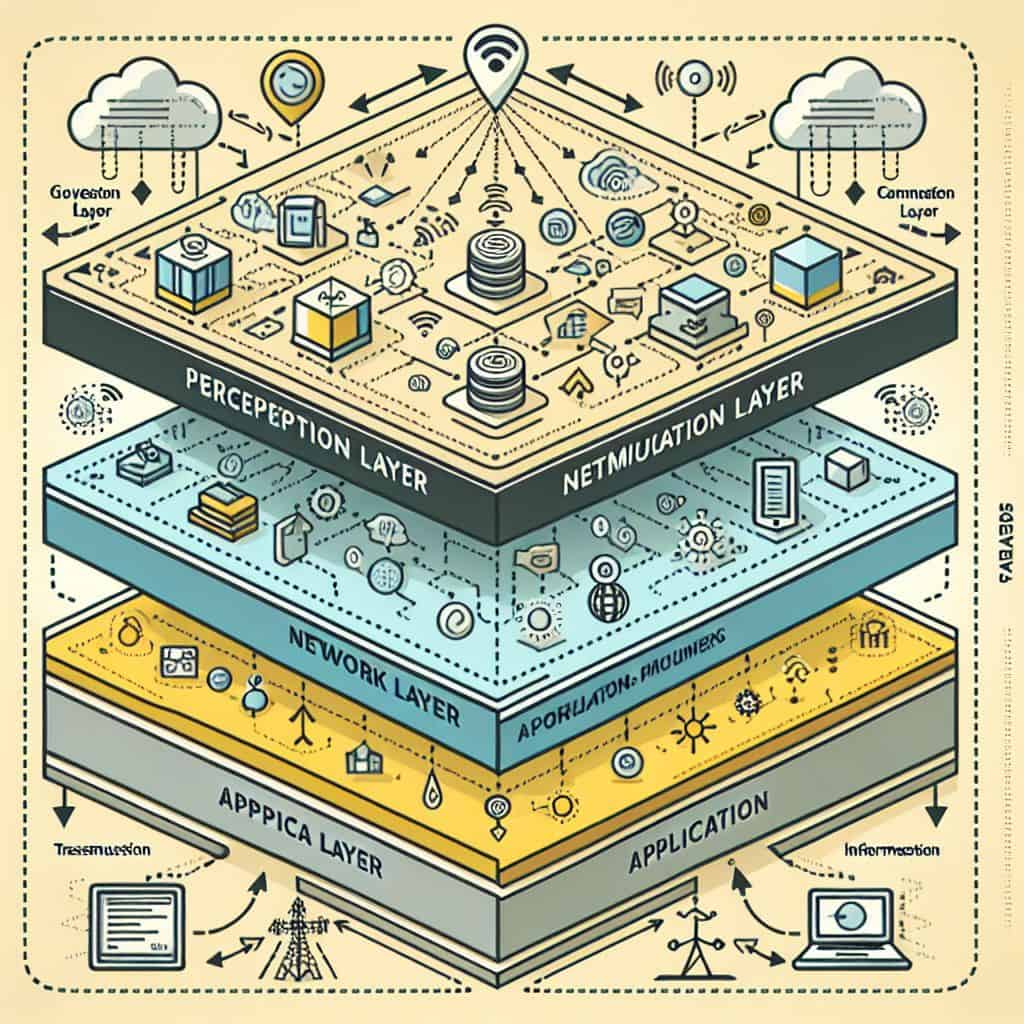In a cold morning at the end of 2023, an intelligent factory in Shenzhen suddenly experienced a large area of offline devices. After urgent investigation, the problem lies in the selection of communication technology - a certain low-power WAN solution adopted by the factory has serious interference in the device-intensive environment, resulting in network congestion. This real case gives us a wake-up call: in the era of Internet of Things, the choice of communication technology is related to the success or failure of the whole system.
With the exponential growth in the number of IoT devices, it is expected that by 2025 more than 75 billion IoT devices will be deployed worldwide. In the face of such a huge group of devices, how to choose the right communication technology to ensure reliable connection and efficient communication of the devices has become a key issue that every IoT project must consider carefully. This paper will deeply analyze the development history, technical principles, practical experience and future trends of IoT communication technologies, providing a systematic reference guide for IoT project decision makers and technicians.
Evolution of IoT communication technologies: from wired to wireless, from simple to smart
The development of IoT communication technology reflects the relentless pursuit of "Internet of Everything" by human beings:
- Prior to 1999: The era of wired communications represented by industrial fieldbuses
- RS-485/RS-232: The Beginning of Point-to-Point Communication
- CAN Bus: A Revolutionary Breakthrough in Automotive Electronics
- Industrial Ethernet: The First Convergence of IT and OT
- 2000-2010: The rise of short-range wireless communications
- Bluetooth technology: ushering in a new era of personal wireless communications
- ZigBee: Bringing Self-Grouping Capabilities to the Internet of Things
- WiFi: Building a New Standard for Wireless LANs
- 2010-2020: The rise of low-power WANs
- LoRa: Pioneering a New Model of IoT for Private Networks
- NB-IoT: Internet of Things for Operator Networks
- 5G: Opening a New Era of Internet of Everything
- 2020-present: A New Era of Intelligent Convergence
- AI-enabled: self-optimization of communication networks
- Deterministic networks: the cornerstone of the Industrial Internet
- Heterogeneous convergence: multi-technology synergy
This history tells us that IoT communication technology is not a simple update iteration, but a continuous innovation driven by application needs. Every technological breakthrough brings new application possibilities and new challenges.

The Role of Communication Technology in the Internet of Things
IoT communication technology is the infrastructure that enables the "Internet of Everything" and it plays the following key roles in the IoT architecture:
1. Data transmission
- Realization of data exchange between devices
- Ensure reliable and real-time data transmission
- Supports the transmission needs of multiple data types
2. Network connectivity
- Build network topology between devices
- Provides flexible access
- Ensure network stability and scalability
3. Protocol support
- Realization of protocol conversions at different levels
- Supports multiple communication standards
- Ensure interoperability between devices
IoT Communication Technology Classification
Based on the communication distance and application scenarios, IoT communication technologies can be categorized as follows:

Short-range communications technology
1. Bluetooth
- Transmission distance: 10-100 meters
- Frequency band: 2.4GHz
- Features: low power consumption, easy integration
- Applications: Wearables, Smart Home
2. ZigBee
- Transmission distance: 10-100 meters
- Frequency band: 2.4GHz/868MHz/915MHz
- Features: low power consumption, self-organizing network
- Applications: industrial control, intelligent lighting
3. NFC
- Transmission distance: <10 cm
- Frequency band: 13.56MHz
- Features: near-field communication, high security
- Applications: mobile payments, identification
Medium-range communication technology
1. WiFi
- Transmission distance: about 100 meters
- Frequency band: 2.4GHz/5GHz
- Characteristics: High speed, wide range of applications
- Applications: smart home, office network
2. LoRa
- Transmission distance: 2-15 kilometers
- Frequency band: 433MHz/868MHz/915MHz
- Features: long range, low power consumption
- Applications: Smart Cities, Environmental Monitoring
Long-range communications technology
1. Cellular networks (4G/5G)
- Transmission distance: several kilometers to tens of kilometers
- Characteristics: High speed, wide coverage
- Applications: Telematics, remote monitoring
2. NB-IoT
- Transmission distance: several kilometers to tens of kilometers
- Features: low power consumption, wide coverage
- Applications: smart meter reading, asset tracking
Overview of communication protocols
IoT communication protocols can be categorized by level:
1. Application layer protocols
- MQTT: A Lightweight Messaging Protocol
- CoAP: Restricted Application Protocol
- HTTP: Hypertext Transfer Protocol
2. Network layer protocols
- IPv6: Internet Protocol version 6
- 6LoWPAN: Low Power Wireless Personal Area Networks
3. Transport layer protocols
- TCP: Transmission Control Protocol
- UDP: User Datagram Protocol
Considerations for selecting communications technology
1. Application requirements
- 📡 Transmission distance
- ⚡ Data rate
- ⏱️ Real-Time Requirements
- 🔒 Reliability requirements
2. Equipment characterization
- 🔋 Power consumption requirements
- 💰 Cost budgeting
- 🔧 Hardware limitations
- 🏭 Deployment Environment
2. Network characteristics
- 🌐 Network capacity
- 📍 Coverage
- 📈 Extensibility
- 💼 Maintenance costs
The above three dimensions of consideration need to be weighed against specific project requirements to select the most appropriate communication technology solution.
IoT communication technology is the core foundation for interconnecting devices, and choosing the right communication technology is critical to the success of an IoT project. With the continuous development of technology, IoT communication will evolve in the direction of faster, more stable and more secure.
byword
Comparative analysis of communication technologies
In order to help readers better understand the characteristics of various communication technologies, we provide a comparative analysis in several dimensions:
| communications technology | transmission rate | power wastage | (manufacturing, production etc) costs | Applicable Scenarios | Key Benefits | major disadvantage |
|---|---|---|---|---|---|---|
| Bluetooth 5.0 | 2Mbps | lower (one's head) | lower (one's head) | Personal Area Network | Broad support, easy integration | Short distance and weak anti-interference |
| WiFi 6 | 9.6Gbps | center | center | local area network (LAN) | High speed, mature and stable | Higher power consumption and limited coverage |
| LoRa | 50kbps | extremely low | lower (one's head) | wide area network | Long range, low power consumption | Low rate and high latency |
| 5G | 20Gbps | your (honorific) | your (honorific) | wide area network | High speed, low latency | High cost and long construction period for coverage |
Typical Application Scenario Analysis
1. Smart home scenarios
In a smart home scenario, the following aspects usually need to be considered:
- Near-field device control: using Bluetooth or ZigBee
- Lighting control
- Appliance control
- Sensor Data Acquisition
- Home network connection: using WiFi
- video surveillance
- multimedia streaming
- remote control
- Communication protocol selection:
- Near Field Control: BLE Mesh
- Remote Control: MQTT over WiFi
- Video transmission: RTSP over WiFi
2. Industrial IoT scenarios
The Industrial Internet of Things (IoT) has more stringent requirements for communication technologies:
- Intra-plant communication:
- Industrial Ethernet: real-time control
- Industrial WiFi: Mobile Device Access
- ZigBee: Sensor Networks
- Remote monitoring and management:
- 4G/5G: remote access
- NB-IoT: Asset Tracking
- LoRa: environmental monitoring
3. Smart city scenarios
IoT applications for smart cities involve the synergy of multiple communication technologies:
- Municipal facility monitoring:
- Street light control: LoRa/NB-IoT
- Dumpster monitoring: NB-IoT
- Well Cover Monitoring: LoRa
- Environmental monitoring:
- Air Quality: NB-IoT/LoRa
- Noise monitoring: LoRa
- Water quality monitoring: NB-IoT
- Traffic Management:
- Traffic monitoring: 5G
- Parking Management: NB-IoT
- Public Transportation Tracking: 4G/5G
Content review.





